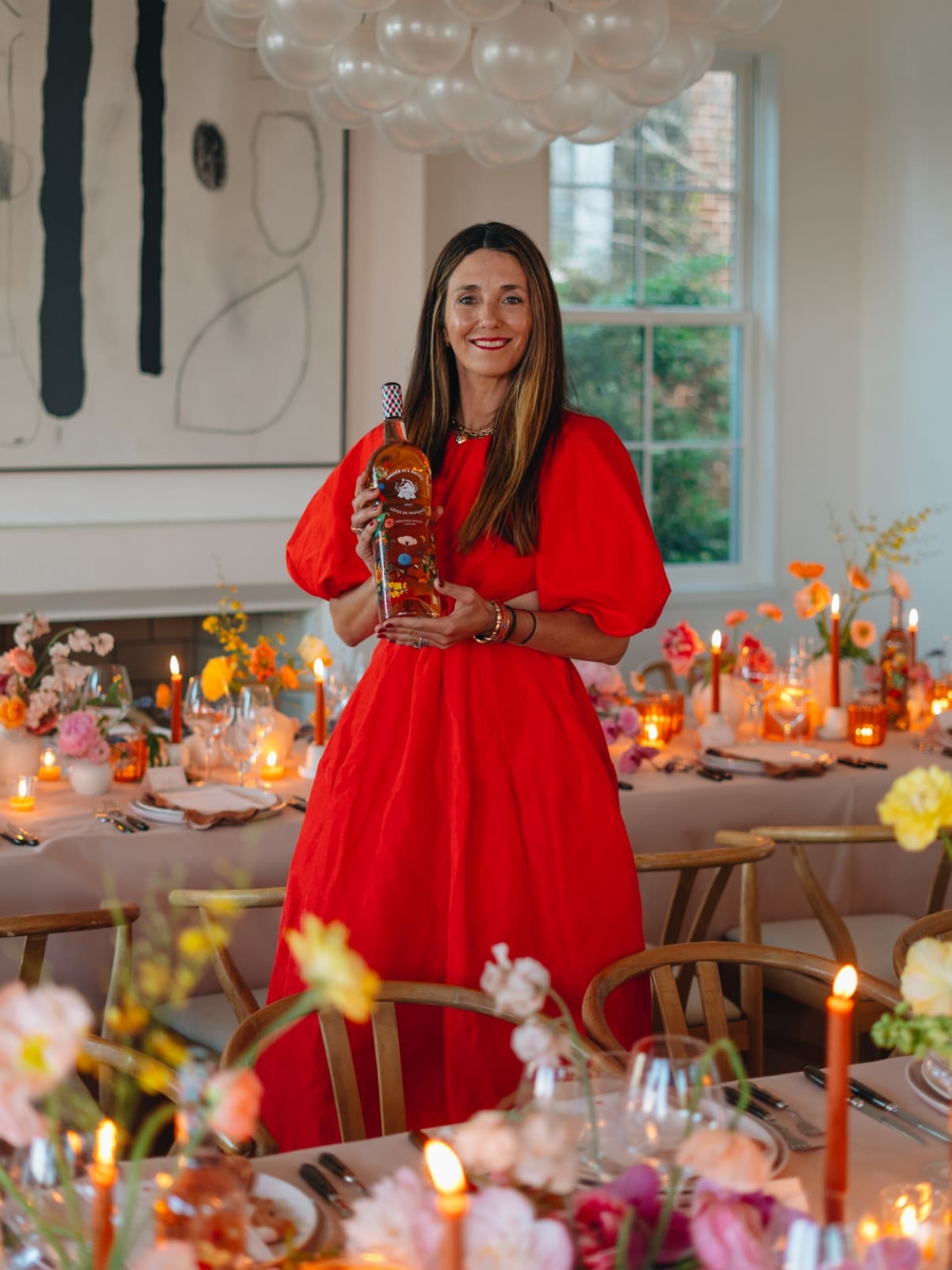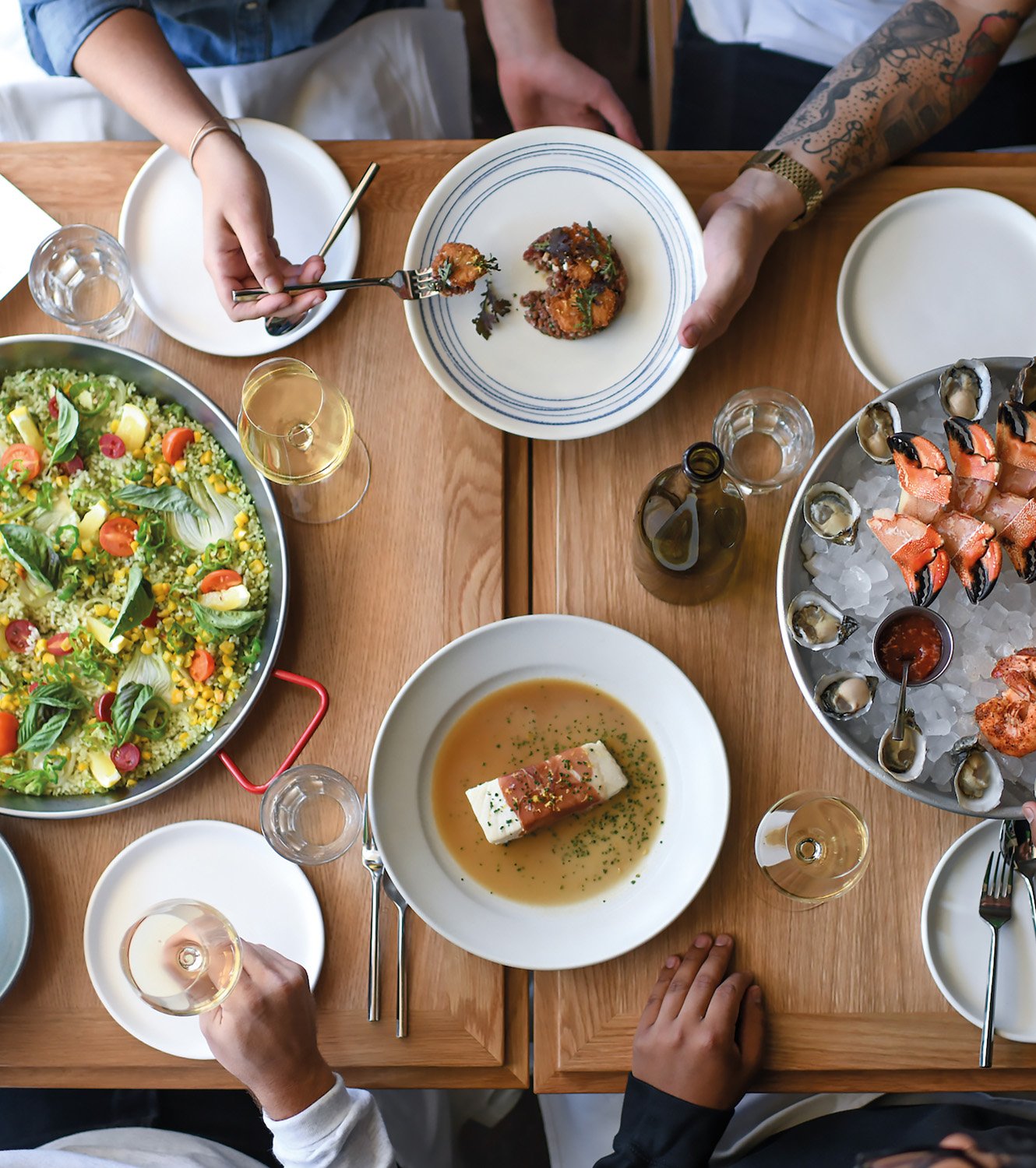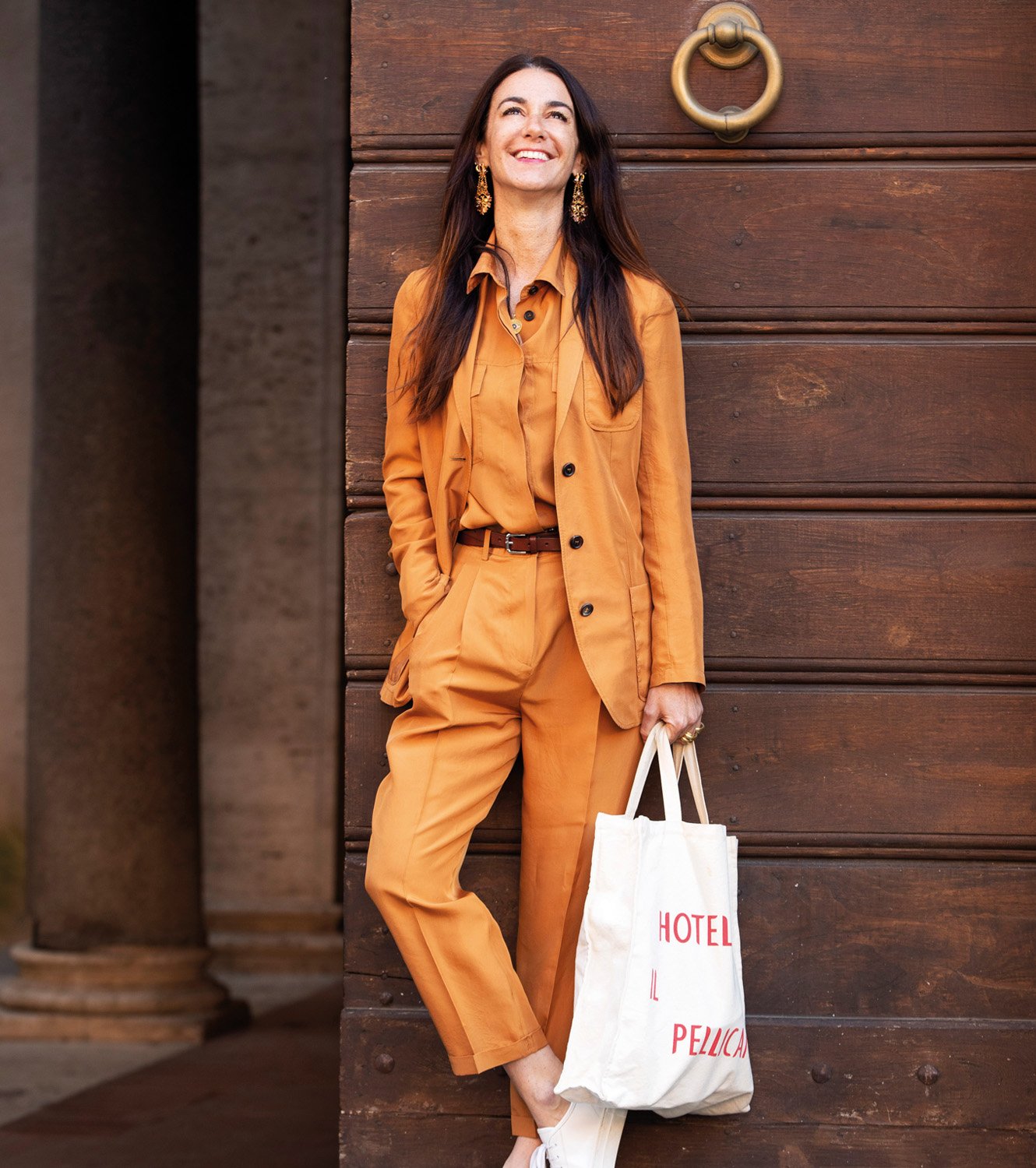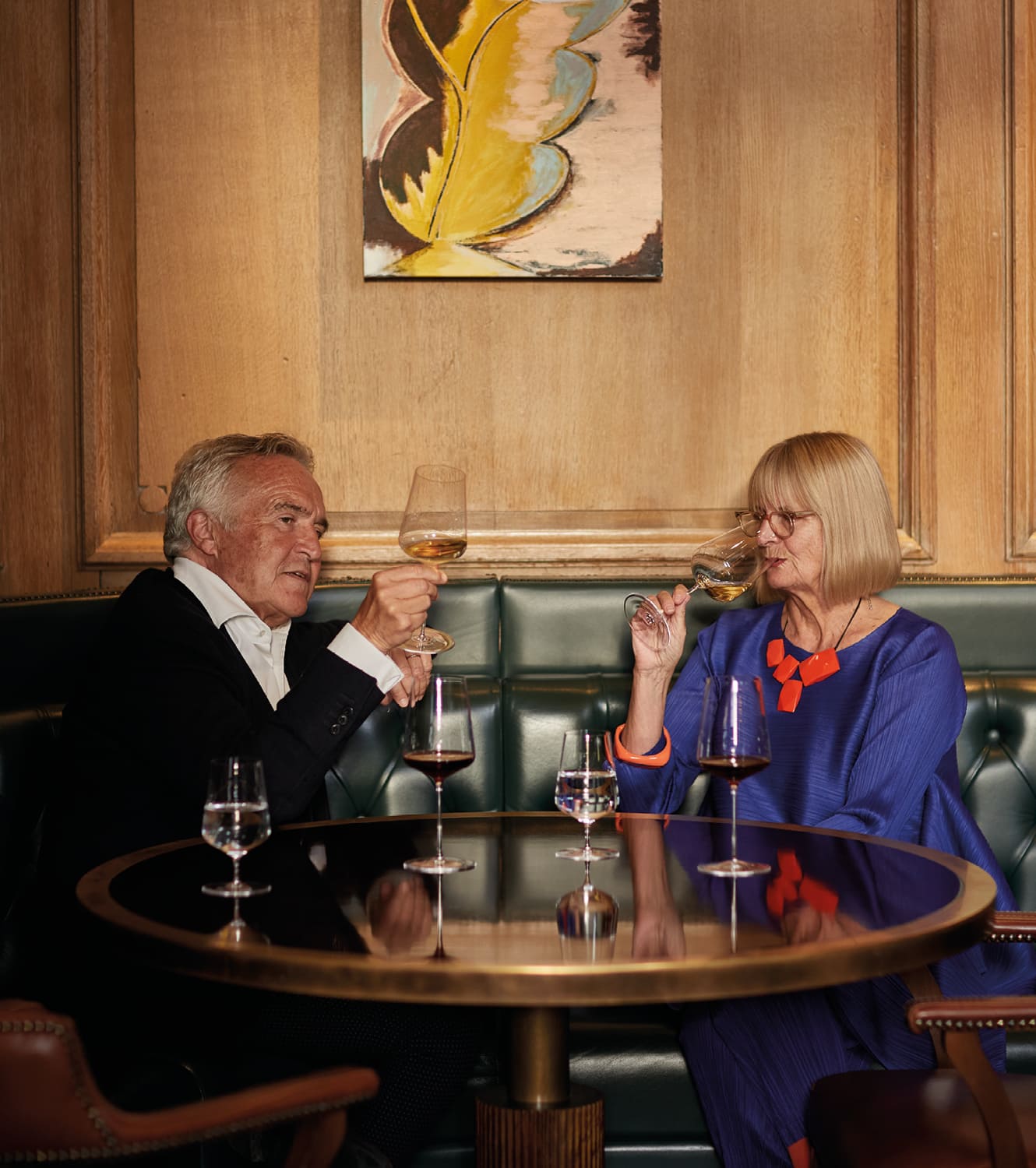
PROVENCE IN A BOTTLE
Soak up the South of France’s carefree lifestyle and sunny summer vibes with a sip of rosé, courtesy of boutique producers Maison Mirabeau and Wölffer Estate, writes Will Hersey
“People don’t want to just drink rosé,” says Jeany Cronk, co-founder, with her husband Stephen, of rosé brand Maison Mirabeau, from her home in Provence. “They want to feel like they’re in the South of France with their feet in the sand, in a place where everyone feels free.” It’s this aspirational quality that has helped catapult a drink so out of vogue less than 20 years ago into its current status as a ready-made lifestyle in a glass. Its once maligned salmon pink hue now represents a shortcut to care-free summer living, wherever you happen to be.
The Cronks have lived through its meteoric rise from the inside. In 2009, they left a comfortable life in London, with two kids and a third on the way, to combine Jeany’s longing to live in Provence with Stephen’s long-held passion to return to wine, having started as an importer after university before taking a job in the telecoms sector. Since their move, exports from the Provence region have grown fourfold and export value has doubled over the last five years. And the US market accounts for a hefty 40 percent of these exports.
“People think we had a moment of madness one day but we’d actually been talking and debating it pretty much since we’d met,” explains German-born Jeany. Life got in the way for several years, but a now-or-never moment arrived when Stephen was offered a promotion. “I think it made him realize that he would be heading down this path and it would become harder and harder to leave,” Jeany recalls. Instead of accepting it, he handed in his resignation. There was no turning back.

TOP AND ABOVE, THE CRONK FAMILY, JEANY AND STEPHEN, AT MAISON MIRABEAU ESTATE IN PROVENCE
“What we’ve created with Summer in a Bottle is unique, we could take it to Asia. We’re really selling a lifestyle”
Joey Wölffer
LE BIG BREAK
The Cronks didn’t have the money to buy a vineyard, so the plan was to become a negociant, buying and blending wine to market under their own Maison Mirabeau brand. As big fans of dry, pale Provence rosé, it felt like the natural product to focus on. “We’d always consumed copious amounts of rosé and had started to see more people reaching for it,” she says. “It just works for so many situations; it’s relaxed, social and joyful. People don’t need to know a huge amount to love it. We just thought: here is an underrated product.”
A year after moving to the medieval village of Cotignac, they had a huge breakthrough when UK food retailer Waitrose agreed to trial their product. This wasn’t just any retailer. The Waitrose clientele is known as affluent, discerning and interested in wine. It not only gave them a stamp of approval that they had been chosen by the company’s notoriously picky wine buyers, but they now had a direct line into their target drinker. “I don’t really know what would have become of us if we hadn’t had that first break,” says Jeany, who now serves on the supervisory board of the local wine board, CIVP (Conseil Interprofessionnel des Vins de Provence), working with other small growers in need of help.
From this early foothold they began using rudimentary social media to raise their profile, and their own story, of an English family battling their way in France, became intertwined with the brand. “‘Come on the journey,’ was sort of our mantra, even if it wasn’t perfect by any means,” says Jeany, whose background in marketing, photography and interior design made her the natural fit on the branding and social side. “We wanted to send this feeling into the world, giving people ideas and recipes, very visual – a stylish project in a stylish region. We also knew we had to make the most of our David v Goliath story.”
It’s no accident that rosé’s boom has coincided with the Instagram age. Naturally photogenic, it has combined easily with trends for casual dining, food festivals and alfresco drinking, giving it new status as “millennial champagne” alongside a string of lifestyle hashtags like #roséallday.
The Cronks’ adoption of social media – and work since to place Mirabeau in the right hotels and resorts – gave them an advantage over the French region’s more traditional producers, for whom the concept of marketing had previously been seen as something of a dirty word. It’s fair to say that it probably took a newcomer’s eye to see the wisdom of a low-fi video on how to open a wine bottle with a shoe, which has now amassed 12 million views on YouTube.
“Of course we present a very wholesome image but behind that is a real family with real issues,” says Jeany. Not least settling three children into a whole new life. “Plus Stephen and I have now worked together for the best part of 13 years. Everyone who works with their spouse knows there are great moments, as well as very tough ones.”
AMERICAN DREAM
Central to the global rosé story is Provence itself, a region admired for its unstuffy sophistication and dedication to the good life. Rosé wine is thought to have been made here by the Greeks some 2,500 years ago, putting it far beyond any notions of passing fads. Its 21st-century winemakers, though, have worked together to develop a consistent crisp, dry and light style that is easily-identifiable to be the world’s most respected – and best-selling – rosé.
Several winemaking regions have sought to emulate its qualities, including in Long Island, where the late entrepreneur Christian Wölffer saw the potential to make an elegant rosé on his estate in Sagaponack on South Fork back in the early 1990s.
When his son Marc and daughter Joey took over in 2013, from careers outside of wine, they could see its full potential with a fresh eye. Wölffer Estate launched Summer In A Bottle Long Island, a bold and vibrant bottle aimed squarely at the growing rosé lifestyle market. Sales have continued to rocket amid the emergence of the Hamptons as a US rosé heartland, attracting new competition, including from celebrity producers such as Jon Bon Jovi.
The lure of Provence remained strong though, and after a two-year search for the right local grower to partner with, the Wölffer Estate added Summer in a Bottle Côtes de Provence to their pink portfolio in 2022. Fragrant and lively, it offers a distinct profile from its Long Island stablemate, but with a similar label design and ethos.
“What we’ve created with Summer in a Bottle is unique,” Joey Wölffer told Bloomberg at the time of launch. “We could take it to Asia. We’re really selling a lifestyle.”
BACK TO NATURE
Understandably, the right to make rosé in its spiritual home is now highly prized, with several huge, global players now rubbing shoulders with smaller producers like Maison Mirabeau. “With some of those huge companies coming in, brand is (increasingly) important, and we hope there will be a place for more boutique players like us,” says Jeany Cronk.
In 2019, the couple marked another milestone when they bought a winery of their own. Domaine Mirabeau has become a base to farm, experiment, host and to “show how you can hopefully farm vineyards in tune with nature,” says Jeany. Now in their third year of converting to regenerative farming, Stephen has founded the Regenerative Viticulture Foundation to share expertise for similar projects.
Jeany says, “It takes lots of time and money and it’ll consume you but it’s a passion project.” The recent hot, dry and dusty summers of Provence continue to be a reminder why such projects are necessary. It all feels a long way from their kitchen in Richmond, south London, where the pivotal decision to start this second life was made.
“We’ve definitely had our moments fearing we may not be able to make it and where we had to cling on to our dream,” says Jeany. Ultimately, as with the rosé renaissance itself, it was the Provencal lifestyle that won through. “We just loved living here, so I guess we were doing everything to succeed.”

JOEY WÖLFFER AT THE WINERY, HOLDING A SUMMER IN A BOTTLE CÔTES DE PROVENCE
©Maison Mirabeau ©Wolffer Estate Vineyards


THE ALTERNATIVE
The 2022 Pink Wine “Le Cèrisier,” by The Language of Yes in partnership with Maze Row, is a small production rosé. The wine is made with a blend of 60 percent Tibouren, 26 percent Cinsaut, and 14 percent Grenache, grown on the Creston Ridge and Windfall Farms vineyards in Paso Robles on the Central Coast of California.
In the words of the winemaker Randall Grahm: “The wine has a very pale peach color and floral elegance. Jumping out of the glass is the voluble fragrance of cherry and almond blossom, with more subtle notes of strawberry, rhubarb and plum – more the flower than the fruit itself. There is bright, refreshing acidity with a creamy texture and exceptionally long finish.
“This wine has not been filtered and, as such, benefits enormously from some time in the (reasonably voluminous) glass and being served not too cold. This pink wine will almost certainly (gasp) repay several years of cellaring and continued development.”
For more information, visit mazerow.com
We recommend
SIPPING IN THE SUNSHINE
When in California, it’s best to go nowhere fast, suggests Jillian Anthony. Take a leisurely road trip from LA to Santa Cruz, then stop off at Napa for a heavy pour of wine country
DISCOVER THE INVENTIVE FOOD AND WINE SCENES IN EUROPE’S SECOND CITIES
European capitals can sometimes steal away from the second cities’ limelight, yet it’s often in these urban settings where the most inventive food and wine culture flourishes, reports William Hersey
MARIE-LOUISE SCIÒ’S SECRET ITALY
The creative director of Pellicano Hotels and founder of Issimo is on a journey to spread her personal brand of Italianness, with a high sprinkling of sprezzatura. Here, she opens her little black book and shares with us some of her favorite spots around the country
A QUESTION OF TASTE
How does the mystery of taste apply to wine? Stephen Bayley, an outspoken commentator on modern culture, art and design who has made it his life’s mission to unravel the riddle of taste, heads to 67 Pall Mall London to ask the queen critic of wine, Jancis Robinson




